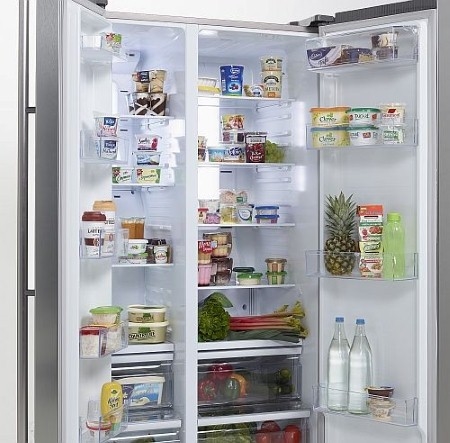 aging, the latest trend is towards providing customized packaging solutions that are perfectly tailored to meet the needs of the product and the target group in terms of their technology, function and design. At interpack 2014, GIZEH will be presenting a full range of technical options for stiff plastic packaging. One of the highlights is its brand new digital printing process.
aging, the latest trend is towards providing customized packaging solutions that are perfectly tailored to meet the needs of the product and the target group in terms of their technology, function and design. At interpack 2014, GIZEH will be presenting a full range of technical options for stiff plastic packaging. One of the highlights is its brand new digital printing process."End users – particularly of food products – are becoming ever more demanding and manufacturers are under constant pressure from their competitors ", says Frank Kriener, GIZEH's Head of Sales and Product Development.“So packaging is increasingly becoming an important distinguishing feature." At the packaging exhibition interpack, packaging experts GIZEH will be pushing the technical boundaries. This includes innovative solutions in thermoforming, injection moulding and injection stretch moulding. The company will also be showcasing other decorative procedures such as in-mould labelling, shrink-sleeving, labelling and printing. And with its digital cup printing, GIZEH will be presenting a world first.
Lasting freshness, longer shelf life and ease of use
From a functional perspective, there is growing emphasis on product protection and longer shelf life thanks to packaging solutions that are specifically tailored to suit particular products. In this respect, GIZEH will be displaying a range of containers with oxygen barriers. GIZEH is one of the first plastic packaging manufacturers to succeed in combining an oxygen barrier with a totally transparent appearance. This new process, developed by GIZEH, not only allows good contact transparency but also has a transparent appearance, even above the filling line. GIZEH will also be presenting a wide range of options for improved handling and user-friendliness.
The technical and functional aspect will be rounded off by examples of how additional functions can be integrated into the packaging, such as gimmicks, see-through panels or ready-to-go solutions. GIZEH designs containers that combine a variety of functions for sectors such as the cooked meat industry. All the benefits of the various manufacturing and decorating processes are effectively combined, including attractive shapes, product protection using barrier layers and the optimum use of decorative surfaces.
A world first: digital printing opens up new marketing opportunities
GIZEH is one of the world's first packaging manufacturers to introduce series production of digital cup printing, and this will be highlighted at the trade fair. The process works in a similar way to an ink jet printer. The digital print image is transferred to the container without touching it via tiny ink drops. Digital cup printing is extremely fast and flexible compared to conventional printing techniques. The motif can be switched with a simple click of the mouse.
"Digital cup printing is particularly useful when smaller runs need decoration that is fast and economical but still high quality", says Kriener. For example, limited editions and regional or seasonal promotions can be produced with extremely short lead times. The process is also ideal for products with small volumes and a large number of variants. "In terms of design and marketing, digital printing opens up totally new perspectives for the customer."
A variety of appearances, textures and shapes
With regard to design elements, GIZEH also demonstrates the huge choice of potential shapes, textures and looks that can be used to reach a specific target group. This includes a wide range of cup dimensions, such as waisted cups for ‘light’ products or unusual shapes such as a fish-shaped, microwavable PP bowl for a fish product. GIZEH will also be presenting a number of options for surfaces and decoration, including in-mould labelling, shrink-sleeving, labelling and printing.
Some of the highlights in this respect include a new offset printing process for curved and waisted plastic cups, which GIZEH has perfected for series production. This means that complex cup geometries with opposing curve radii can be decorated using the fast, economical offset process. In the past, this was only possible for sleeve processes.







